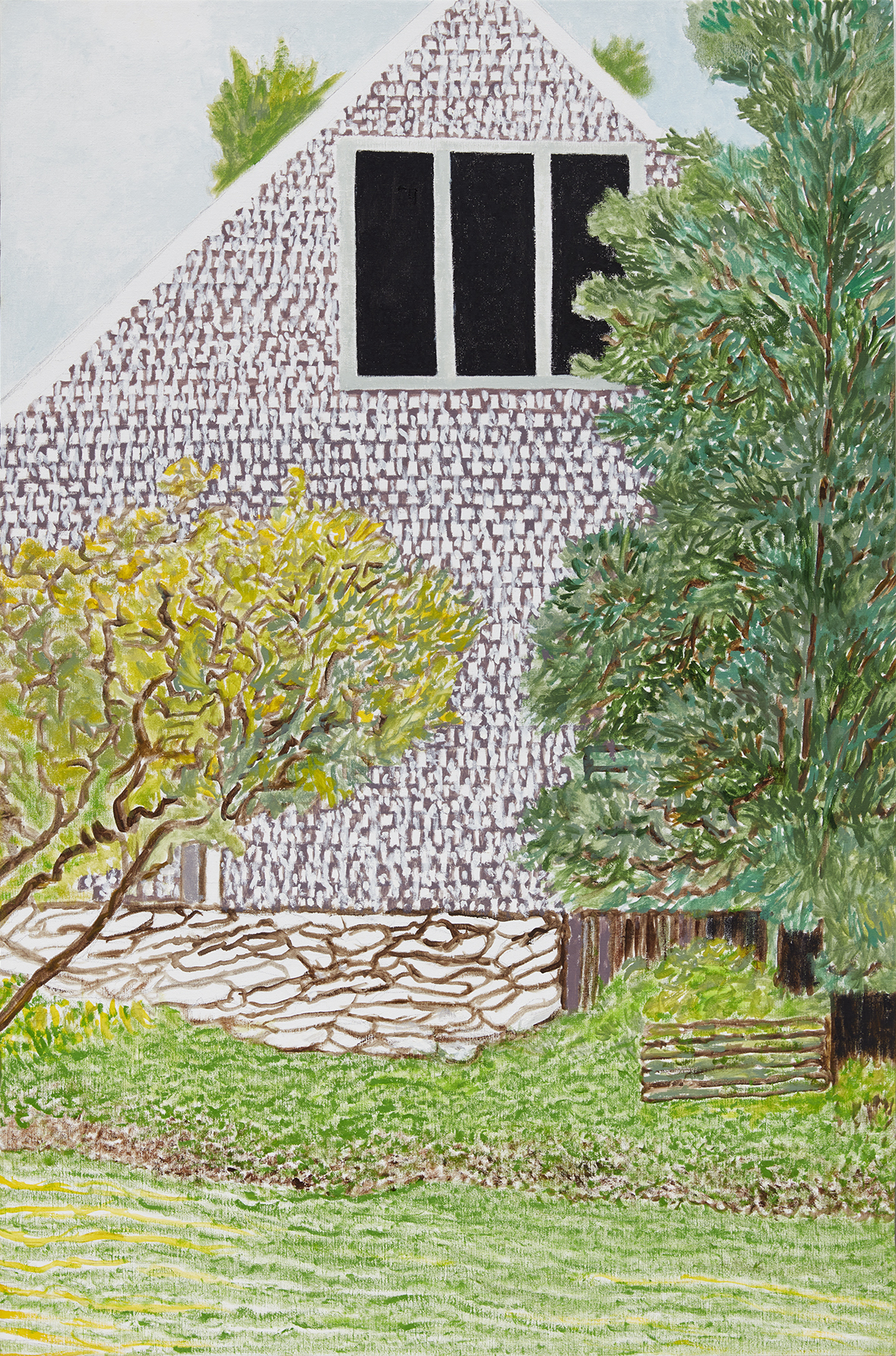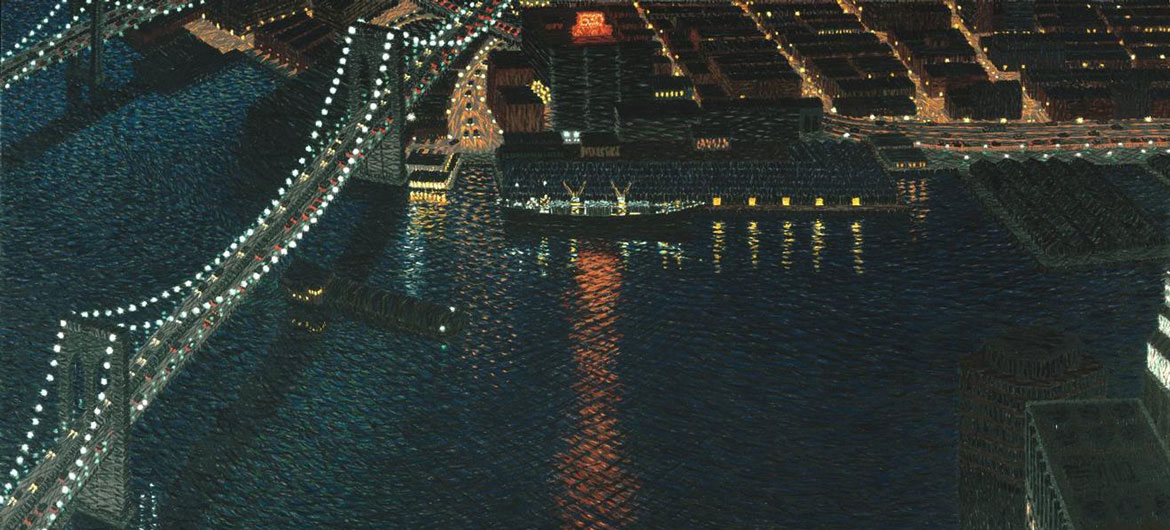Yvonne Jacquette, “an artist acclaimed for her aerial views of cities and landscapes, passed away in her Manhattan home on April 23, 2023. Born in Pittsburgh in 1934, she grew up in Stamford, Connecticut, and studied at the Rhode Island School of Design from 1952 to 1955, leaving after three years to move to New York. ... She continued to live and work in New York City and Searsmont, Maine until her passing,” said DC Moore Gallery in New York, where her art will be on view in two exhibitions, “Looking Up/Down/Inside/Out, 1962 – 1976,” and “Recent Views, Maine & New York,” from May 4 to June 10, 2023. I was fortunate to have the chance to interview Jacquette for the essay below in 2011, which ended up not being published until now.
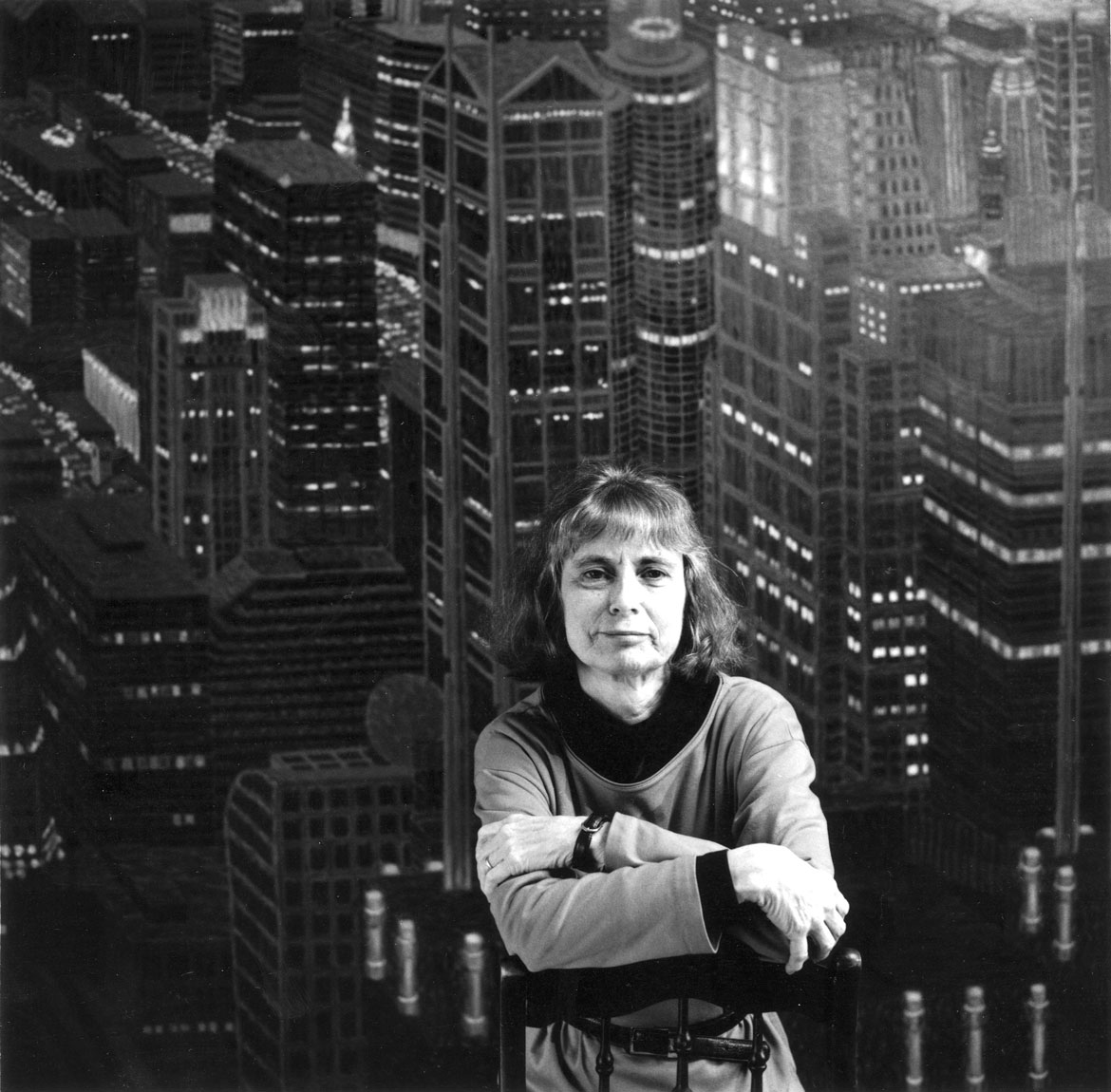
In the painting, we gaze down upon a bend of the Passagassawakeag River in Belfast, dotted by boats and spanned by two bridges, and then the green countryside beyond. Yvonne Jacquette had painted clouds seen from airliner windows for about four years, but now in 1975, the 40-year-old took to drawing pastels in the back of chartered Cessnas flying over Maine and developing them back in her studio into 5-foot-wide oil paintings built from lots of short dashed strokes.
“You’re bopping around, the thermals are making the plane jump,” she says. “You only can hope to make a lot of tiny strokes to remind you when you got home that’s the color you might want to use. That tended to look like Impressionism. I never really set out to be an Impressionist, that was just how I could practically do it.”
This aerial view of Belfast was the first major canvas in what became Jacquette’s signature birds-eye style. “I was just trying to find some space that was different from what all these guys were doing,” she says.
A New Yorker, she began summering in Maine with her husband, the photographer and filmmaker Rudy Burckhardt, in 1964. They rented a place in Lincolnville with the artists Red and Mimi Grooms, and near friends like painter Alex Katz and his wife Ada and the poet and dance critic Edwin Denby. The following year the couple bought a house at Searsmont with Denby (the town continues to be Jacquette’s summer haven), and extended their connections to painters Rackstraw Downes and Neil Welliver. They were also occasionally in contact with painter and writer Fairfield Porter on Great Spruce Head Island.
An offhand but thoughtful realism ran through many of the circle’s paintings, echoing the wordcraft of friends among the New York School poets. Back in New York, Jacquette painted spare, severe streetscapes and interiors— their kitchen stove, toys on the floor of their loft, a fluorescent light, a barn window revealing a bit of sky—inspired by conversations she had with Sylvia Plimack Mangold as they took their young sons to parks to play.
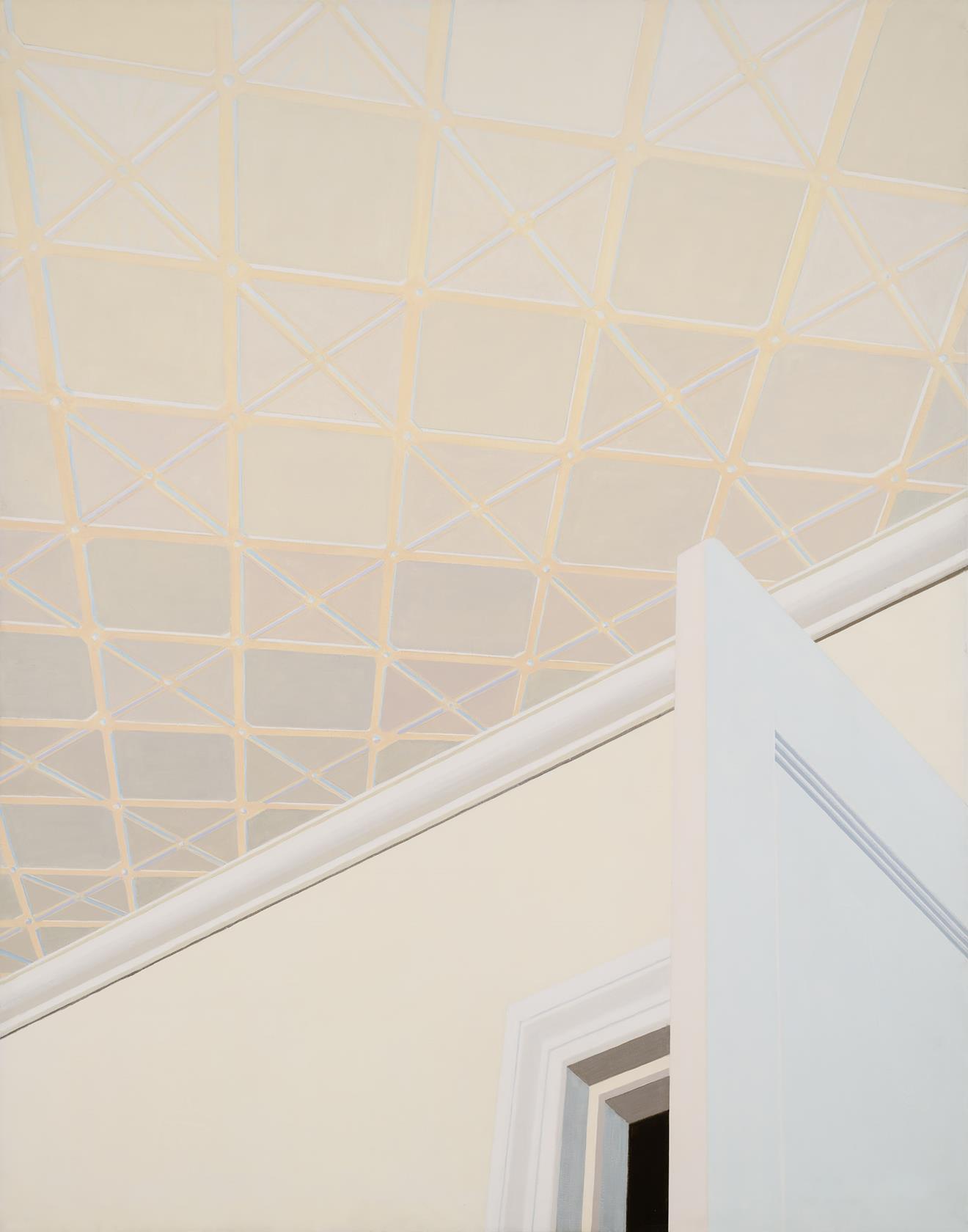
Jacquette’s Maine aerial paintings were different. Aboard little planes, she quickly sketched in the bends of rivers through forests and other landmarks. She often surveys how natural resources dictate development for farming, timber, even nuclear power plants. Rather than the straight down view of satellites, she peers at angles that give buildings and landscapes dimension, and often suggest the curve of the earth, as in her 26-foot-wide triptych of the autumn woods near her Searsmont home that she completed for the Bangor post office in 1981. She took photos for reference, but mainly she was after the feeling of flying, of drawing in the air.
Jacquette continued the aerial works in New York by looking down from skyscrapers, like the World Trade Center. “It was a great place to work because they had these little benches,” she says. “It had a perfect set up. You could sit right at the edge of the window, which went right to the ground and look out at this space right below you. And this little bench had a high back so you could drape your coat or something over that and sit there and draw and nobody would even see you.”
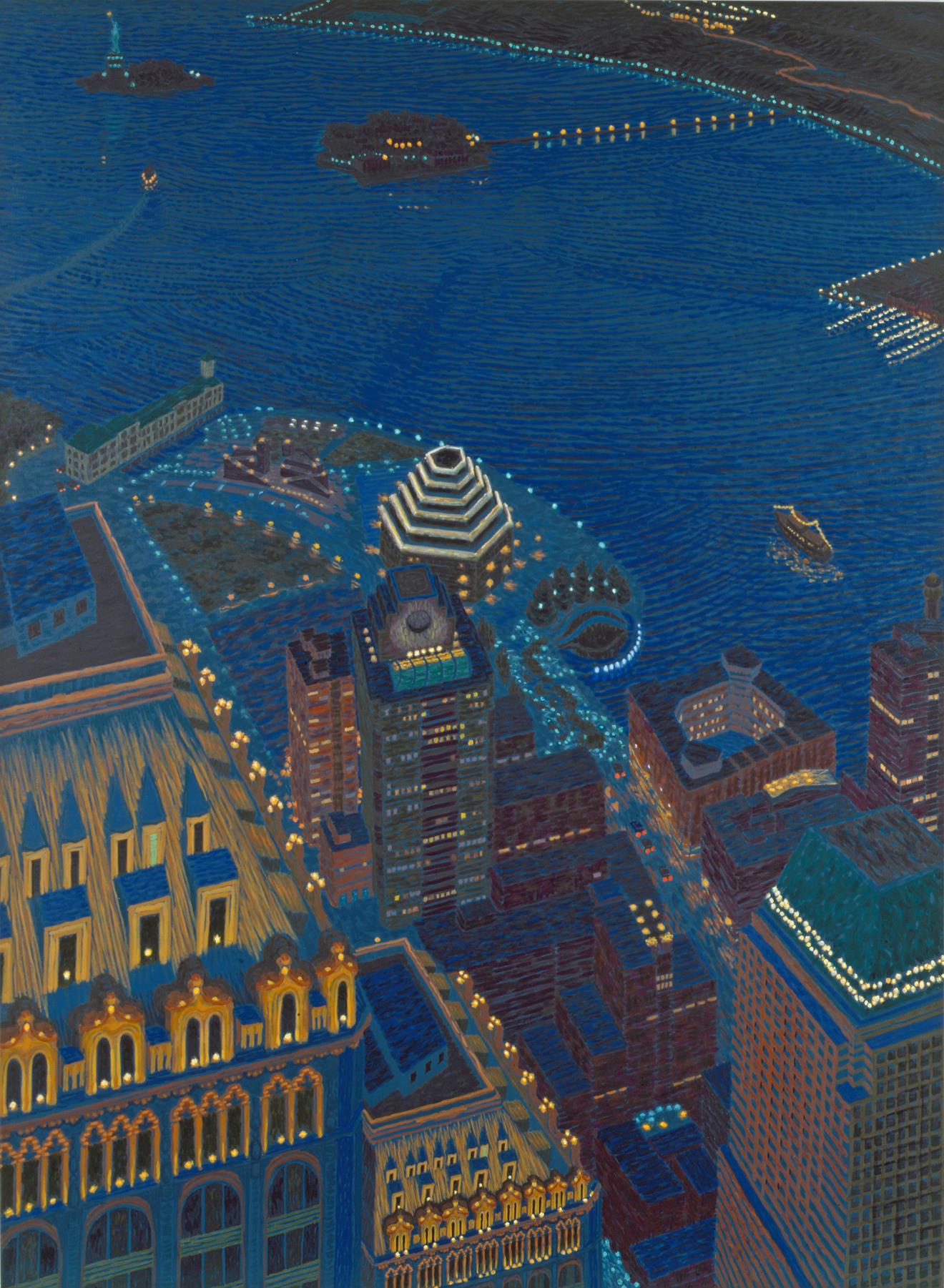
Visits to an ill Denby at New York University Hospital in 1978, inspired glowing, bustling urban nocturnes drawn from his window. “I was blown away by how gorgeous it was. The color was mostly dark, black or blue-gray on the water and then there were these few little boats that would go up and down rather slowly on the East River, some tugs and some barges. I remember the barges, with a few little lights just at the corners, very slowly going up there. At the side of the river there’d be this stream of cars coming down FDR Drive. … The next time I went at night I took a pad and some pastels and I started to draw.”
Burckhardt died in 1999. Since 2006, Jacquette has partnered with the architect and painter Evans Woollen, who splits his time between Isle au Haut and Colorado, which has provided Jacquette a new territory of mountains and quarries.
Over the years, Jacquette has painted San Francisco, Minneapolis, Chicago, Japan, rural Pennsylvania, and Washington, DC, but New York and Maine remain her central subjects. The view from above, she says, suggests a sort of freedom, a relief from the daily grind. “It has to do with you, how you fit into that space, that distant space below you. You want to feel that you’re floating in a way.”
If this is the kind of coverage of arts, cultures and activisms you appreciate, please support Wonderland by contributing to Wonderland on Patreon. And sign up for our free, occasional newsletter so that you don’t miss any of our reporting. (All content ©Greg Cook 2023 or the respective creators.)


